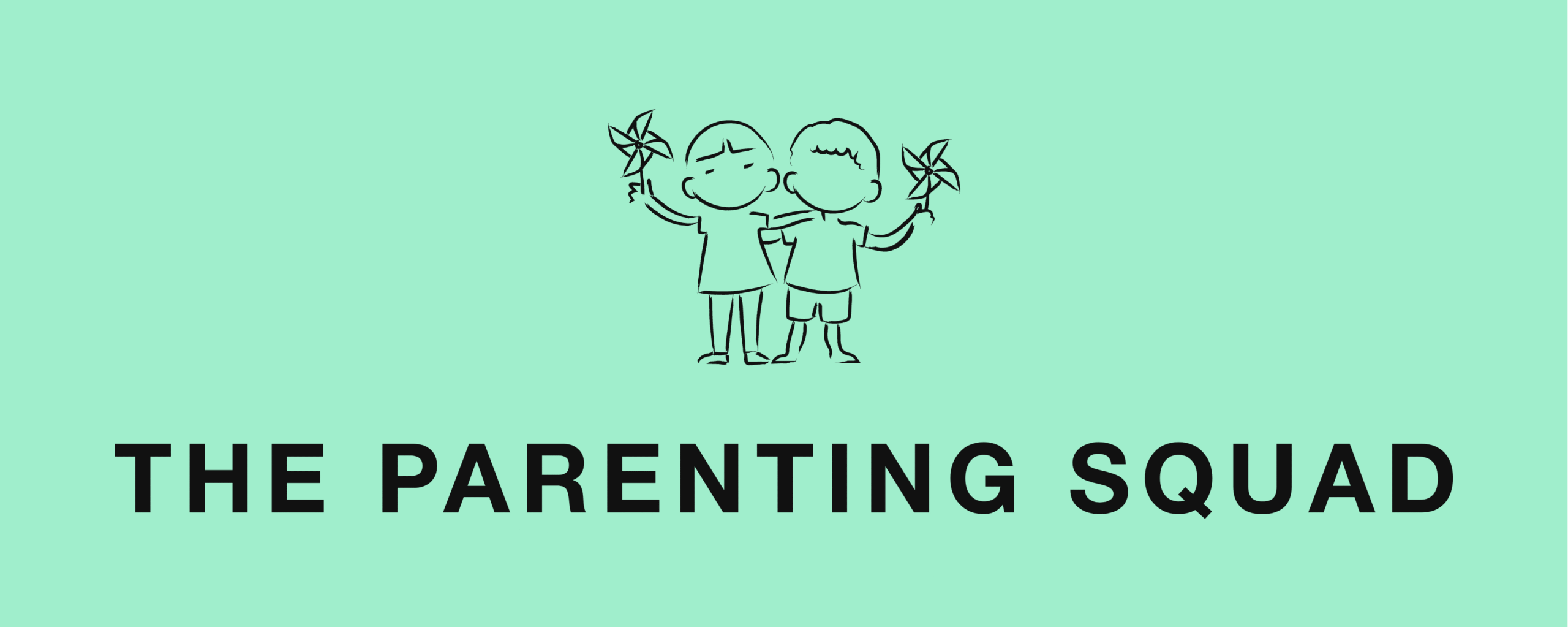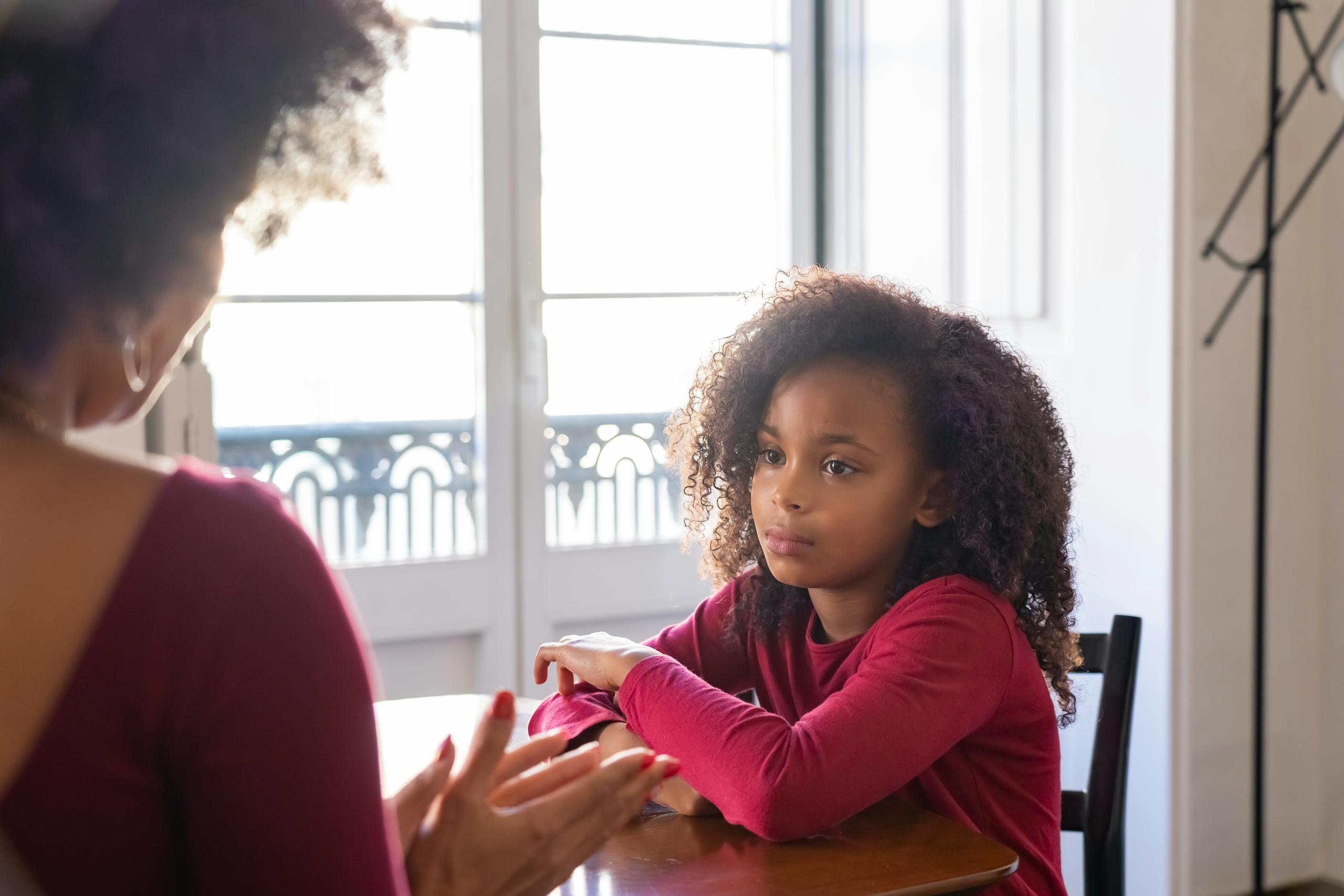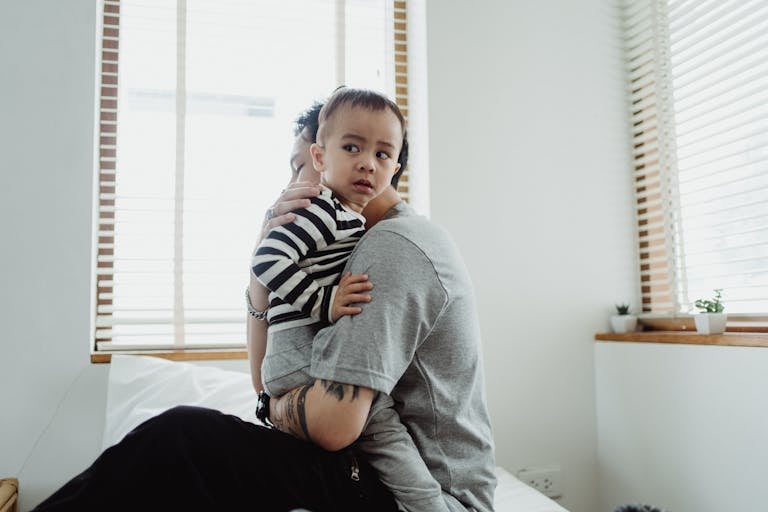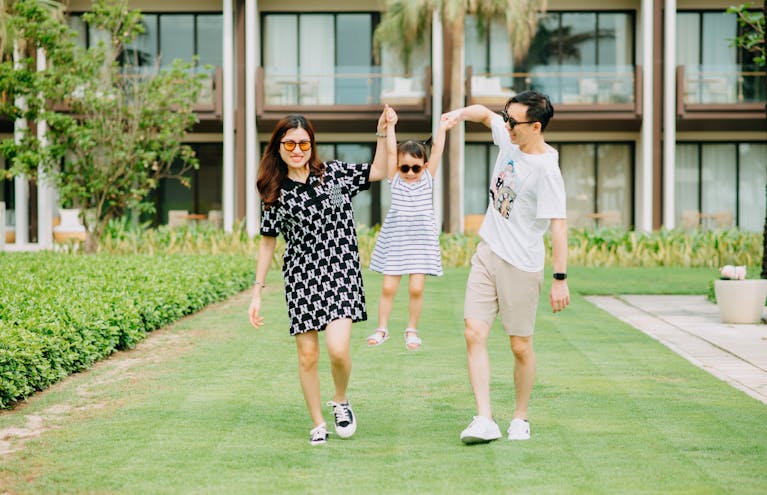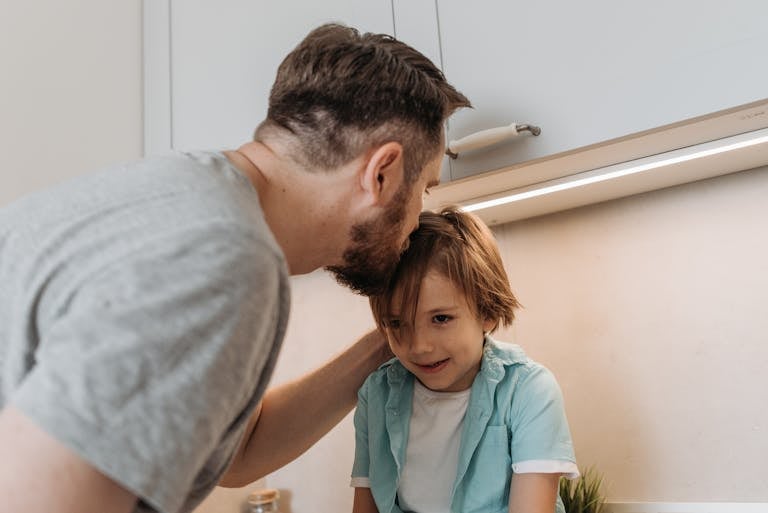Positive Discipline that Works Wonders (Without the Drama!)
Raising kids is full of surprises; not all are cute or funny. From grocery store meltdowns over the “wrong” cereal to teenage eye rolls that could power a small city, discipline can feel like an uphill battle where everyone ends up exhausted and frustrated.
If you’ve ever found yourself yelling louder than your toddler or wondering why your brilliant consequence chart isn’t working, you’re not alone. Most of us grew up with traditional discipline methods—timeouts, punishments, and the occasional “because I said so!”—but what if there was a gentler, more effective approach?
Positive discipline is a game-changing parenting strategy focusing on teaching and guiding rather than punishing. It’s not about letting your kids run wild (no, they still can’t eat cookies for breakfast) but about building mutual respect, fostering cooperation, and helping children develop the internal compass they need to make good choices.
This approach turns those daily power struggles into opportunities for connection and learning. Instead of walking on eggshells waiting for the next meltdown, you’ll discover how to create a home environment where everyone feels heard, respected, and supported.
Ready to trade the drama for some parenting wins? Let’s explore how positive discipline can revolutionize your family dynamics and help you raise confident, responsible kids who want to cooperate.
What is Positive Discipline?
Positive discipline is a parenting approach that emphasizes teaching, mutual respect, and encouragement over traditional punishment-based methods. Think of it as shifting from being a strict ruler to becoming a wise guide who helps children learn from their experiences.
At its core, positive discipline recognizes that children are always learning—even during their most challenging moments. Instead of asking, “How can I make my child pay for this behavior?” Positive discipline asks, “What can my child learn from this situation, and how can I teach it effectively?”
The key difference lies in the approach. Traditional discipline often relies on external control: timeouts, taking away privileges, or using consequences to stop unwanted behavior. While these methods might work temporarily, they don’t teach children why certain behaviors are problematic or help them develop better decision-making skills. Positive discipline focuses on internal motivation. For example, instead of sending a child to timeout for hitting their sibling, a positive discipline approach might involve sitting with the child to discuss feelings, exploring better ways to handle frustration, and helping them make amends. It’s like the difference between putting a band-aid on a wound and healing it.
This approach has roots in psychology and child development research, particularly the work of Alfred Adler and Rudolf Dreikurs. Positive discipline is based on Adlerian counseling concepts emphasizing belonging, significance, and respectful relationships. Adler and Dreikurs advocated treating children respectfully, promoting kindness and democratic parenting. Their work led to formal parenting education programs that help parents and educators apply these principles daily.
Why Choose Positive Discipline?
Builds Stronger Relationships
Positive discipline creates a foundation of mutual respect and trust between parents and children. Respectful relationships are key to fostering cooperation and positive family dynamics as they help children and adults connect through kindness and understanding. When kids feel heard and understood, they’re naturally more willing to cooperate. It’s like having a teammate versus having a boss—teammates work together towards common goals while boss-employee relationships often involve resistance and power struggles.
Consider this scenario: your 8-year-old refuses to clean their room. A traditional approach might involve threats, consequences, or arguments. A positive discipline approach starts with understanding why they’re resistant. Maybe they feel overwhelmed by the mess, don’t know where to start or are testing boundaries. By addressing the root cause with empathy, you’re building trust and teaching problem-solving skills.
Promotes Long-Term Benefits
While punishment might stop unwanted behavior in the moment, positive discipline nurtures self-discipline and responsibility that lasts a lifetime. Children learn to make good choices because they understand the reasons behind them, not because they fear punishment.
This approach helps kids develop critical thinking skills, emotional intelligence, and confidence in their decision-making abilities. Research shows that positive discipline is also associated with improved academic performance. Kids learn to consider how their actions affect others, take responsibility for mistakes, and develop resilience when faced with challenges.
Eliminates Power Struggles
Traditional discipline often creates an “us versus them” dynamic where parents and children constantly battle for control. Positive discipline turns these conflicts into collaborative problem-solving opportunities.
Instead of demanding compliance, you invite cooperation. Instead of winning battles, you build partnerships. This shift dramatically reduces household tension and creates a more peaceful, harmonious environment. Even small changes like how you respond to a meltdown can lead to big wins in your parenting! When children feel like valued team members rather than subordinates, they’re much more likely to contribute positively to family life.
Key Principles of Positive Discipline
Mutual Respect
Positive discipline operates on the principle that both parents and children deserve respect. This doesn’t mean treating your 4-year-old like an adult, but acknowledging their feelings, perspectives, and inherent worth.
Encouraging parents to listen and validate their children’s feelings is a core aspect of building mutual respect.
When children feel heard and respected, they’re more likely to cooperate and show respect. For example, instead of dismissing a child’s upset feelings about wearing a coat (“Stop being dramatic, just put it on!”), You might say, “I can see you don’t want to wear your coat. It’s cold outside and I want to keep you warm. What ideas do you have?”
This approach validates their feelings while still maintaining necessary boundaries. Children learn that their opinions matter, which builds confidence and encourages them to communicate openly rather than resort to defiance.
Encouragement Over Praise
While praise focuses on the outcome (“Good job getting an A!”), encouragement focuses on effort, progress, and internal motivation (“I noticed how hard you studied for that test. How do you feel about your effort?”)
Encouragement fosters a growth mindset by helping children value the learning process rather than just the results. This approach builds resilience and helps kids develop intrinsic motivation rather than dependence on external validation.
Instead of saying “You’re such a good helper,” try “Thank you for setting the table. That helped our family get dinner ready faster.” This acknowledgment helps children understand what was helpful and why it mattered.
Teaching Rather Than Punishing
Positive discipline views mistakes as learning opportunities rather than crimes requiring punishment. The goal is to help children understand the impact of their choices and develop better future strategies.
When your child makes a poor choice, involve them in problem-solving rather than simply imposing consequences. Ask questions like “What happened?” “How do you think everyone felt?” and “What could we do differently next time?” This approach helps children develop critical thinking skills and take ownership of their behavior. No, this doesn’t mean letting your toddler eat cake for dinner or allowing teenagers to ignore curfews. It’s about balancing empathy and expectations, understanding and accountability. Positive discipline avoids harsh punishment and pampering children, as pampering children can lead to entitlement or behavioural issues.
Understanding Children’s Development
Knowing how children grow and learn is at the heart of using effective positive discipline techniques. Positive discipline teaches parents and teachers to focus on building social and life skills rather than simply reacting to misbehaviour. As children develop, they’re constantly learning to solve problems, manage emotions, and interact with others—skills that are essential for becoming responsible, respectful, and confident adults.
One of the most powerful aspects of positive discipline is its emphasis on teaching, not punishing. Instead of relying on outdated methods like physical punishment—which research shows can lead to social and behavioural problems—positive discipline parenting uses specific positive discipline tools to guide children.
Tools like classroom meetings and experiential activities give kids real-life opportunities to practice problem-solving skills, self-control, and cooperation. These strategies help children develop personal power and a sense of belonging, which are key ingredients for positive behaviour and academic achievement.
The impact of positive discipline goes beyond the home. In schools where positive discipline strategies are used, teachers report a noticeable improvement in classroom atmosphere and student cooperation. Teacher education programs directed by certified positive discipline trainers equip educators with classroom management skills experientially to model and teach social skills in age-appropriate ways.
Formal evaluations of schools with positive discipline have shown significant evidence of reduced socially risky behaviour, such as violent behaviour, and increased academic performance compared to other discipline programs. These schools also see fewer power struggles and more mutual respect among students and staff.
Parents and teachers participating in Adlerian parent education classes or positive discipline parenting programs learn how to use a kind and firm approach—setting clear boundaries while showing empathy and respect. This approach prevents power struggles and encourages children to take responsibility for their actions and learn from their mistakes. Parents and teachers help children develop the tools they need to succeed in school and life by focusing on teaching social and life skills.
Ultimately, understanding children’s development and using positive discipline techniques creates an environment where kids can flourish. When parents and teachers prioritise teaching over punishing, children learn to make good choices, solve problems, and become contributing community members.
The result? Statistically significant improvements in behavior, academic performance, and overall well-being prove that positive discipline works wonders without the drama.
How to Use Positive Discipline Techniques
Step 1: Connection First
Before trying to correct behaviour, prioritise your relationship with your child. Connection is the foundation that makes all other discipline strategies work. When children feel emotionally safe and connected to their parents, they’re naturally more cooperative and receptive to guidance.
Tip: Spend 10 minutes daily focused, one-on-one time with your child. Put away devices, get to their level, and engage in an activity they enjoy. This investment in connection pays off when challenging moments arise.
During conflict,s take a moment to reconnect before addressing the issue. A gentle touch, getting down to eye leve,l or simply acknowledging their feelings can completely change the dynamic of the interaction.
Step 2: Be Clear About Expectations
Children thrive when they know what’s expected of them. But how we communicate those expectations makes all the difference. Instead of barking orders or making demands, frame expectations in positive, collaborative language.
Example: Instead of saying, “Clean your room!” try, “Your room needs to be organized before dinner so we can have a pleasant evening together. What’s your plan for getting it done?”
This approach explains the reason behind the expectation and invites the child to help create the solution. It turns a demand into a problem-solving opportunity and helps children understand the connection between their actions and family harmony.
Age-appropriate expectations are key. A three-year-old can’t organise their room the same way a ten-year-old can, but with guidance and support, they can put toys in bins.
Step 3: Use Natural Consequences
Without parental intervention, natural consequences are the logical result of a child’s choices. They’re powerful teaching tools because they allow children to learn from real-world feedback, not arbitrary punishments.
Example: If your child forgets their lunch, resist the urge to rush it to school. The natural consequence—being hungry until snack time or having to eat cafeteria food—will likely be more memorable than any lecture about responsibility.
The key is to step back and let learning happen while providing emotional support. You can acknowledge (“That must have been disappointing to forget your lunch”) without rescuing them from the consequence.
Natural consequences work best when they’re immediate, logically connected to the behaviour, and not harmful to the child’s wellbeing or safety.
Step 4: Encourage Problem-Solving Skills
Instead of imposing solutions, involve your child in brainstorming ways to handle difficult situations. This builds critical thinking skills and helps children feel empowered, not controlled.
Example Question: “What can we do differently next time to avoid this problem?” or “What ideas do you have for solving this?”
Sometimes children come up with surprisingly good solutions. Even when their ideas aren’t perfect, thinking through problems together strengthens your relationship and builds their confidence in their ability to handle challenges.
For younger children, you might offer two or three choices: “Would you like to brush your teeth before or after putting on pajamas?” Open-ended questions work well for older children: “What’s your plan for doing your homework before soccer practice?”
Step 5: Be Firm But Kind
Positive discipline isn’t permissive parenting. It requires setting clear boundaries while delivering them with kindness and respect. This balance—often called “firm and kind”—helps children feel safe and valued.
Scenario: If bedtime is 8 PM, that boundary is non-negotiable. However, you can offer choices within that boundary: “It’s almost bedtime. Would you like to read two short books or one longer book tonight?”
The firmness provides security and structure, while the kindness maintains connection and respect. Children learn that boundaries exist for good reasons but are not delivered harshly or with anger.
When you need to enforce a boundary, use a calm, matter-of-fact tone: “I know you wish you could stay up later, but bedtime is still 8 PM. Let’s make the most of our bedtime routine.”
Step 6: Model the Behaviour You Want
Children learn from what they see. If you want your child to speak respectfully, handle frustration calmly, and treat others kindly, you must consistently model those behaviours.
This means managing your own emotions during challenging parenting moments. When you make mistakes (and you will—we all do), model how to take responsibility and make amends. Apologise when appropriate: “I’m sorry I raised my voice earlier. I was frustrated, but that’s not how I want to communicate with you.”
Children learn more from what they see than what they hear. Your consistent modelling of respect, problem-solving, and emotional regulation becomes their roadmap for navigating their challenges.
Positive Discipline in Practice
Let’s look at how positive discipline works in practice. Parent behaviour is key in these scenarios. Positive discipline addresses problem behaviour by teaching rather than punishing. It prioritises taught social skills as the foundation for good behaviour. These can be applied to different age groups from toddlers to teens.
Grocery Store Meltdown
The Traditional Approach is: “Stop crying right now, or we’re leaving!” followed by threats, bribes, or giving in to avoid embarrassment.
Positive Discipline Approach: Get down to your child’s level, acknowledge their feelings (“I can see you’re disappointed we can’t get that candy”), and offer choices within acceptable limits (“We’re not buying candy today, but you can choose between these two healthy snacks for later”).
This validates their emotions while maintaining boundaries. Instead of escalating the situation with threats, you’re teaching emotional regulation and problem-solving skills. These work well for younger children still learning to manage their emotions.
Sibling Rivalry
Traditional Approach: “I don’t care who started it—you’re both going to your rooms!”
Positive Discipline Approach: “I can see you’re both upset. Let’s sit together and figure out what happened and how we can solve this problem.” Guide them through expressing their feelings, understanding each other’s perspectives, and brainstorming solutions.
Instead of punishing both childre,n you’re teaching conflict resolution skills they’ll use for the rest of their lives. You’re also showing them how to repair relationships after a disagreement.
Homework Battles
Traditional Approach: Constant reminders, threats about grades, or sitting with them to ensure completion.
Positive Discipline Approach: Collaborate with your child to create a homework system that works for them. Ask questions like “What time of day do you focus best?” and “What kind of environment helps you concentrate?” Then step back and let them manage their responsibilities while offering support when asked.
Instead of creating dependency, you’re building independence and executive functioning skills. The focus shifts from compliance to ownership of their education. Research shows positive discipline increases academic performance by promoting independence and responsibility.
Common Myths About Positive Discipline (And the Truth!)
Myth 1: Positive Discipline Means Being a Pushover
Truth: Positive discipline requires more strength and consistency than traditional approaches. You’re setting clear boundaries while treating everyone with respect. It’s not about avoiding conflict or letting children run the household—it’s about addressing conflicts constructively and teaching children to be responsible family members. Parents using positive discipline still say “no,” set bedtimes, and enforce household rules. The difference is in how these boundaries are communicated and maintained.
Myth 2: It Won’t Work on Strong-Willed Children
Truth: Strong-willed children often respond better to positive discipline than traditional methods because it honours their need for autonomy while providing structure. These children frequently rebel against authoritarian approaches but thrive when they feel respected and included in problem-solving.
Positive discipline channels strong-willed traits—determination, independence, critical thinking—into positive directions rather than trying to squash these valuable characteristics.
Myth 3: It Requires Too Much Time and Energy
Truth: Like learning any new skill, positive discipline requires upfront investment but saves time and energy in the long run. When children develop self-discipline and problem-solving skills, parents spend less time managing behaviour and more time enjoying their relationships.
The initial effort of teaching and modelling pays off with fewer power struggles, better cooperation, and more peaceful family interactions.
Getting Started with Positive Discipline
Start small and focus on one or two principles at a time. Trying to overhaul your parenting approach overnight will feel overwhelming for you and your children. Choose one area—maybe bedtime routines or sibling conflicts—and practice positive discipline strategies consistently in that context.
Involve the whole family in creating a family approach by having regular meetings where everyone can share what’s working well and their challenges. Even young children can contribute ideas for making family life run more smoothly.
Remember, this is a learning process for everyone. You’ll make mistakes, and that’s okay—model handling mistakes by acknowledging them, learning from them, and making amends when necessary.
Join positive parenting communities online or in your local area. Connecting with other parents using similar approaches can provide support, encouragement, and practical ideas for your challenges.
Read books, attend workshops, or take online courses about positive discipline. The more you understand the philosophy and technique, the more confident and effective you’ll become in implementing them. Parent educators—trained professionals in parenting education—can also guide families through structured programs, offering expert support and helping you apply positive discipline principles effectively.
Building a Foundation for Lifelong Success
Positive discipline isn’t just about managing today’s challenges—it’s about raising children who become confident, capable, and caring adults. When children grow up feeling respected, heard and valued they develop strong internal compasses that guide them through life’s complexities. The skills they learn through positive discipline—problem-solving, empathy, responsibility, and resilience—serve them well in school, relationships, and future careers. They learn to think critically, communicate effectively, and handle challenges with grace and determination.
Most importantly, children raised with positive discipline tend to maintain close, healthy relationships with their parents. Instead of rebelling against or distancing themselves from family connections, they see their parents as trusted advisors and supportive allies.
The ripple effects go beyond your immediate family. Children who experience positive discipline often become more empathetic friends, cooperative classmates, and eventually more effective parents. You’re changing your family dynamics and contributing to a more respectful, collaborative world.
Positive discipline is used in many programs and control schools, including public elementary schools, where it has been shown to improve student behaviour and school climate. Demonstration school programs are models for effective implementation, showing how the approach can be adapted across different educational settings. Positive discipline uses a classroom management model and specific classroom techniques to create a positive school community. Positive discipline formal evaluation studies show that these approaches produce significant results in both behaviour and academic outcomes.
No parent is perfect, and positive discipline isn’t about being perfect. It’s about creating an environment where everyone can learn, grow, and thrive together. Some days will be easier than others, and that’s completely normal. What matters is your commitment to treating your children with the same respect and understanding you’d want for yourself.
Want more personalized guidance on positive discipline in your home? Subscribe to our newsletter for weekly tips, join our parent community, or comment below with your positive discipline wins and challenges. We’re all in this parenting journey together!
